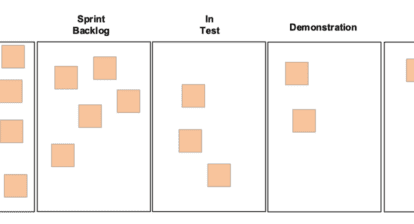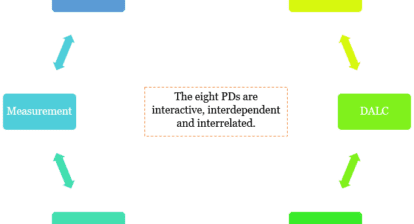 The cornerstone of every successful project is effective communication. As a project manager, everything you do is a communicative process. Clear communication about goals, responsibility and expectations, and performance and feedback, as well as project updates to your various stakeholders, is all part of your responsibility.
The cornerstone of every successful project is effective communication. As a project manager, everything you do is a communicative process. Clear communication about goals, responsibility and expectations, and performance and feedback, as well as project updates to your various stakeholders, is all part of your responsibility.
Communication is critical to the success of your project, and while most project managers know this, it’s easy to forget just how important it is when you’re juggling many things at once. Prioritizing and formalizing a communications plan can help make your project successful.
Here are some do’s and don’ts that can enhance your project management communication.
DO have a communications plan in place
You wouldn’t start a project without a plan, and a communications plan is equally important, as it can serve as a blueprint for how you’re going to get the project information out to the people who need it. A communications plan can help you organize and document the process, types, and expectations of communications throughout the duration of your project.
DO set communication expectations early
It is important to set expectations for communications early-on in the project, not only for your own benefit, but for your team and stakeholders, too. When creating your communications plan, ask yourself:
- What kind of communication is required? (in-person meetings, reports, visuals)
- Who do I need to communicate with? (team members, clients, stakeholders); and
- How frequently will we communicate?
See your communications plan as a living document that may need to be adapted as the project evolves.
DO be clear and direct
Make your statements clear and free of any unnecessary jargon. Using jargon can muddy things and confuse your audience, which impacts your bottom line. Work to ensure that what you say is understood by your audience. Ask for feedback, encourage questions, and provide clarity when needed. Projects sometimes fail because we’ve forgotten to clearly articulate the project’s vision and success criteria to our varied audiences. Your vision and expectations must be clearly communicated to each of your team members and stakeholders early-on.
DO know your audience
Effective and efficient project management communication is delivered by first considering the needs of the audience. The most effective project managers understand that each audience uses language differently, and tailor their messages accordingly. Be aware of your language based on who you’re talking to: you wouldn’t use the same wording when talking to your IT team and your client.
DO be supportive of your project team
When you’re “in the weeds” of a project and bogged down in the day-to-day details, it can be easy to forget to praise the individuals who are working towards your shared goals. Project managers have a tendency to focus on next steps and on the big picture, forgetting to focus on the current achievements of your team members. Recognizing when someone has gone the extra mile or accomplished something on the project can boost morale and have an impact on the long-term success of your project. Work to ensure that recognition is shared with your project team, and use hitting milestones as an excuse to celebrate where you are and give your team a boost to get where you’re going.
DON’T forget to listen
An effective project manager knows when to listen to what team members are saying, and let them know their input is valued. From the onset, let your team know that you have an open-door policy and encourage communication from them. Whether they’re facing a challenge or have an idea that may enhance the project, be willing to listen to their concerns and contributions. Don’t be afraid to make changes if you are presented with new information or a different point of view. Remember that communication is a two-way street.
DON’T ignore bad news
When your project starts to go off the rails, it’s easy to say you’ll “handle” it and not share the news with the team in order to avoid spoiling someone’s day (or weekend!), but the office rumor mill moves quickly, and it’s best to directly address issues as they come up, with the whole team. Gather facts on what happened, address issues quickly, and brainstorm solutions with your team as appropriate.
DON’T use a top-down communication style
Although it may be tempting to talk “at” your team, it isn’t the most enriching form of communication. Adopt an “open door policy” and encourage your team and stakeholders to speak to you at any time. Some of the best project enhancement ideas come not from management, but from those who are “in the trenches” and working on the minutiae of the project.
DON’T rely solely on email or electronic communications
Check anyone’s inbox and you’ll see no shortage of emails waiting to be answered. This makes it difficult for emails to effectively and efficiently get their intended message across. At project launch, set the expectation that there will be regular communication that is varied, comprehensive, and encouraged. Team meetings, 1:1 check-ins with staff, small group sessions, and group chats are all good ways to mix things up. In a sea of emails and online messaging tools, it is important to remember that the most powerful communication is face-to-face. And yes, sometimes emails are effective, but they shouldn’t be your only communication method.
Conclusion
Good communication is vital to the management and success of projects in any industry. Following the above do’s and don’ts can help ensure that essential information reaches the right people at the right time, helping you more easily resolve conflicts, strengthen your team relationship dynamics, and ultimately lead to the success of your project.
Related Content
Webinars (watch for free now!):
Leveraging Project, Project Server and Project Online for Better Communications
The Basics of Schedule Planning – It’s ALL about Communication
Articles:
Communication: 5 Ways to Improve Your Project’s Lessons Learned
Size Matters (in Plan Communications)
Ask the Experts: 15 Microsoft Project Tips for New Users









Dennis Aquilo
Spot on. Communication Planning is a frequently overlooked discipline. I especially liked the advice, “Don’t rely solely on email or electronic communications.” In many organizations, there are recurring opportunities for project teams to communicate in a personal way that are freely available to them with a little planning. Some examples are mgmt round table meetings, steering committee meetings, and strategic planning sessions. Sometimes, just a few minutes on the right agenda can make the difference between “Nobody knows what’s happening on this project…” and “Looks good. Let us know if there is anything we can do to help.” Thanks for posting this fantastic article.